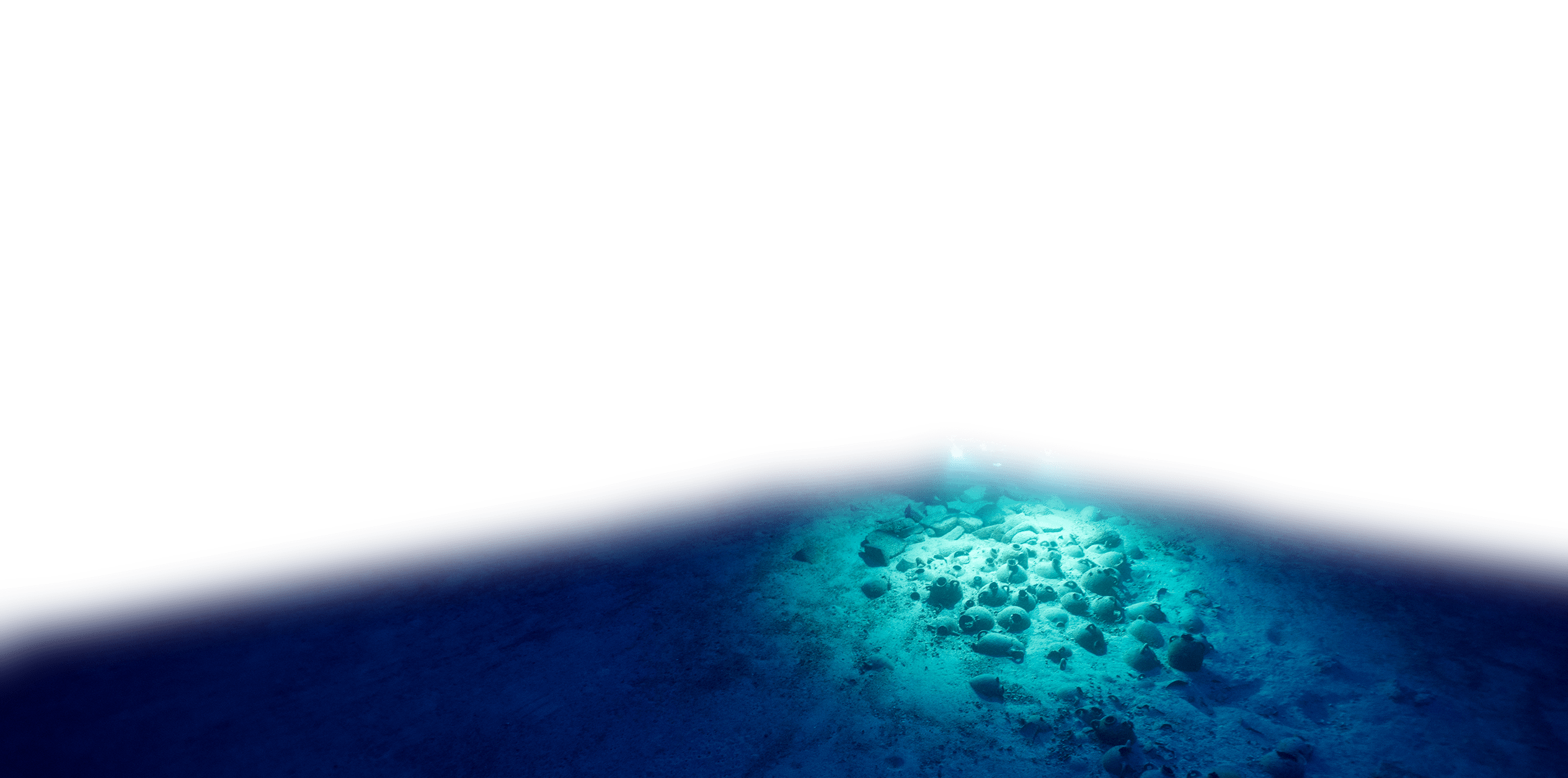
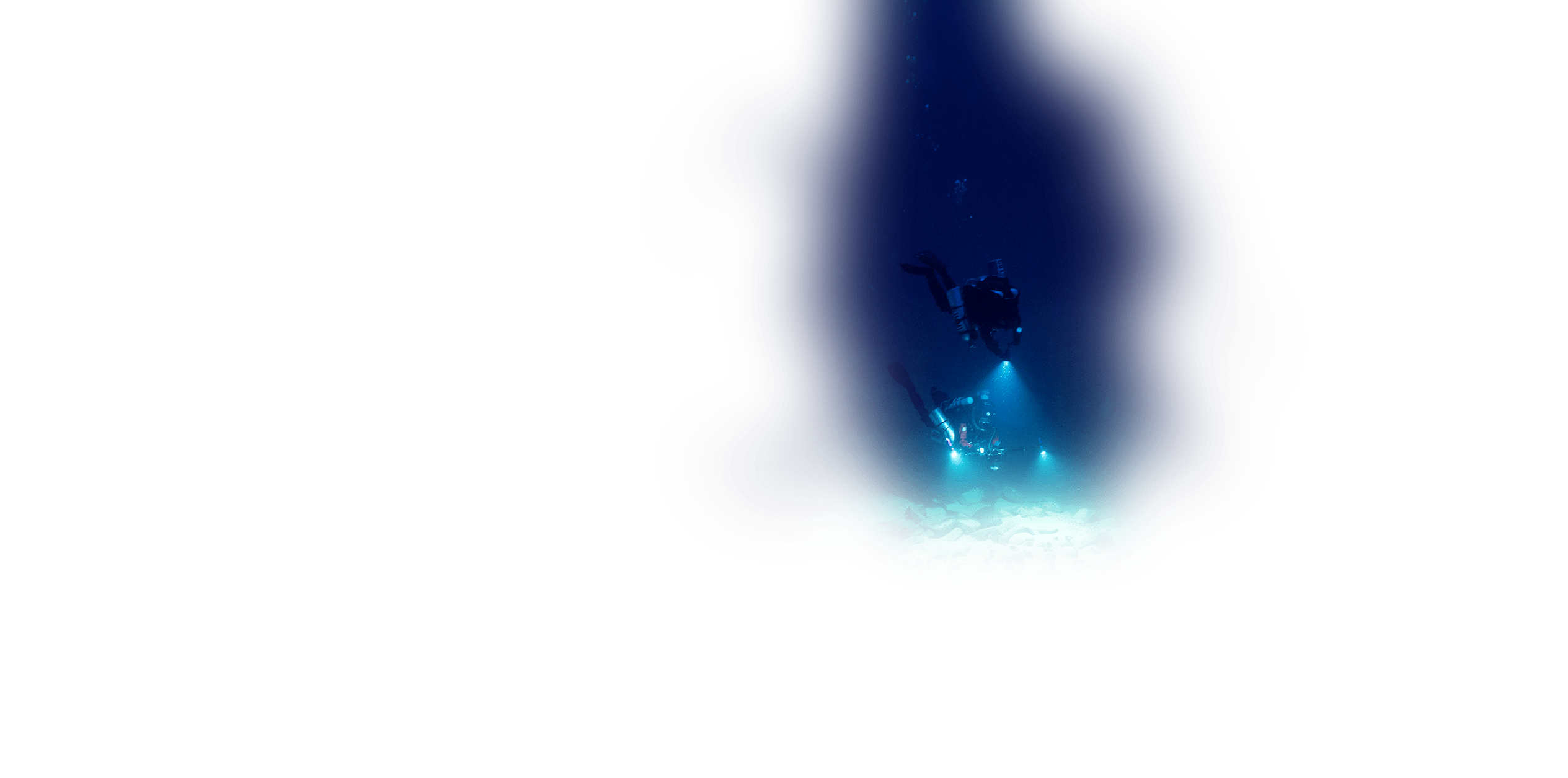
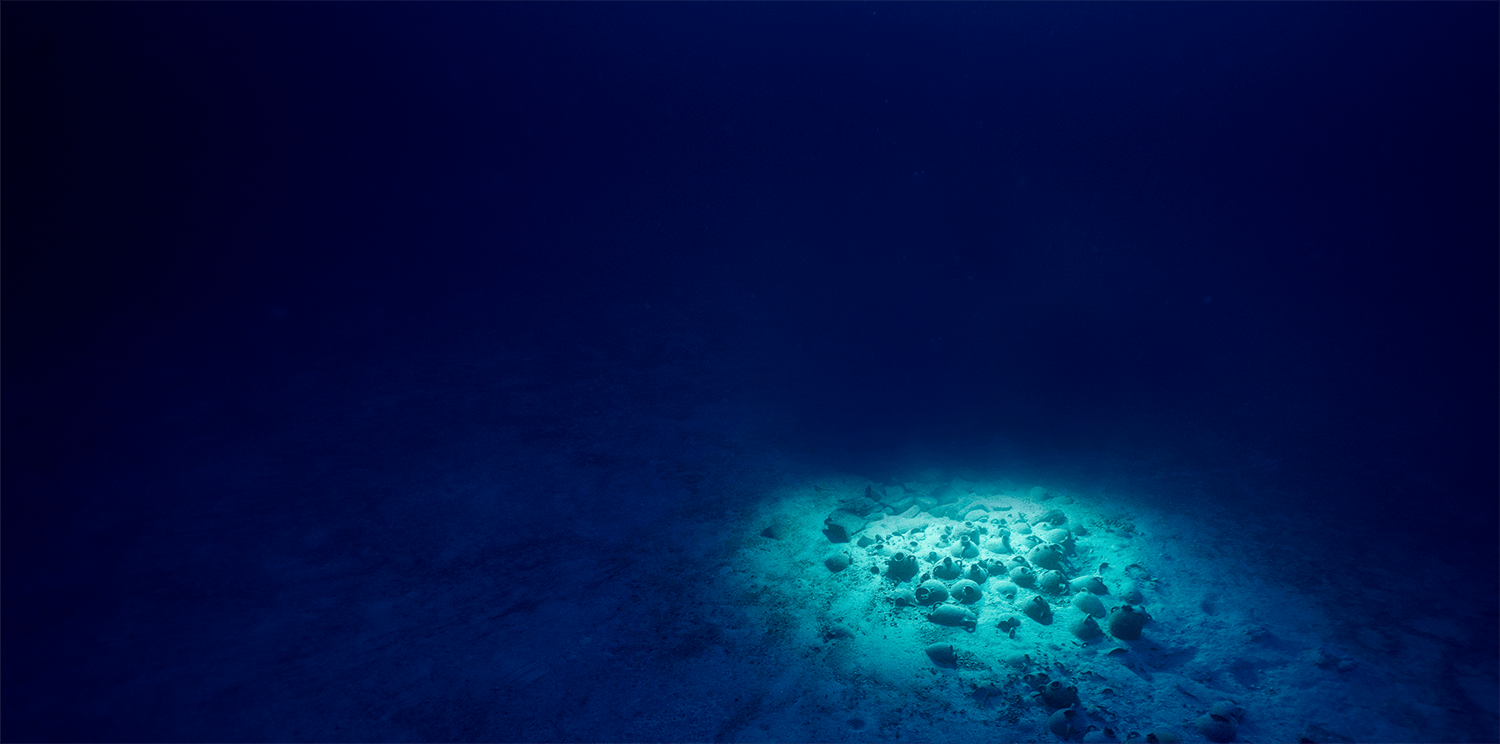
Exploring an Archaic Shipwreck off Xlendi Bay, Gozo
The first ever archaeological excavation by divers beyond 100 meters.
Exploring an Archaic Shipwreck off Xlendi Bay, Gozo
The first ever archaeological excavation by divers beyond 100 meters.
The Discovery
In 2007, during an offshore remote sensing survey aimed at mapping Malta’s Underwater Cultural Heritage, a small anomaly was noted in the sonar data.
Since then, the University of Malta, in collaboration with a number of international partners, have been studying what turned out to be one of the most intriguing recent underwater archaeological discoveries.
Situated at a depth of 110m off Xlendi Bay in Gozo, the Phoenician shipwreck consists of an intact and well-preserved mixed cargo datable to the 7th century BC. The mixed contents of stone and ceramic objects are shedding light on the economic history and trade networks of the Central Mediterranean during the Archaic period. In addition to the archaeological benefits – including the study of hitherto unknown ceramic typologies as well as a wide variety of scientific tests in the post excavation phases – this site presents other challenges and opportunities regards methodologies and access, as well as the communication of such a site.
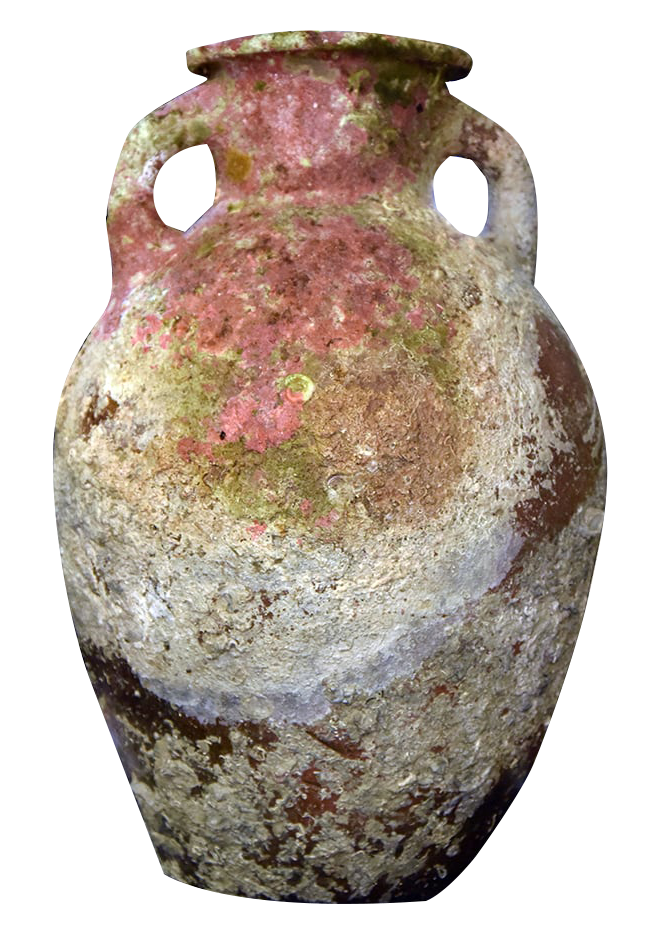
The Cargo
The shipwreck consists of a very well preserved cargo made up of various objects. Indeed it is to date the only well-preserved mixed Phoenician cargo to be discovered intact.
Ceramics are concentrated in the middle part of the shipwreck and include amphorae from various parts of the central Mediterranean, as well as various types of urns. What is extraordinary is that to date urns have mainly been discovered in funerary contexts. At least seven types of ceramic containers have been identified including a small jug.
Both extremities of the ship are laden with saddle querns. These were used as grinding stones for the preparation of food. The fact that these stones are not worn down in any way, clearly indicates that they were brand new. Tests carried out on the volcanic rock have confirmed Pantelleria as the place of origin for these querns.
Its age and diverse nature truly make this shipwreck an unique and precious archaeological resource.
Exploration & Study
Once the age and typology of the shipwreck were identified it became clear that this unique site deserved to be explored and studied in depth.
The first question that needed to be answered is whether there was any more archaeology buried in the sediments located under the visible layer. To this end a Sub Bottom Profiler was deployed over the site to read into the layers of sand and silt. Results were encouraging as well as astonishing – close to two meters of archaeology remains buried in the seabed. It was evident that this site deserved further in-depth studies.
It was not until 2014 however that an international team was formed to conduct further studies on the site. A manned submersible was used to explore the shipwreck in close proximity whilst simultaneously using three high-resolution still cameras to obtain thousands of photographs. The latter were stitched together to form a 3D photogrammetric image of the entire archaeological site. This very high resolution survey of the shipwreck permitted archaeologists to better understand the make-up of the cargo as well as select some important pieces for recovery. Unfortunately, due to a change in weather it was not possible to record the site once the objects had been lifted. Four of the objects recovered in 2014 are on display in this exhibition.
In 2016 a team of specialised technical divers returned to the site. The main objectives were to a) record the site as it was left in 2014; b) recover some more artefacts and c) to record the site after the latest recovery. Following a descent of approximately six minutes’ divers had a maximum of 14 minutes on the site. In order to achieve their assigned tasks, the divers had practiced and rehearsed these in shallower waters. Dives dedicated to recording processes were followed by dives for the retrieval of important objects from the seabed. Upon completion of their tasks it took close to two hours for divers to return to the surface. Three of the objects recovered in 2016 are displayed in this exhibition.
- 1
- 2
- 3
The Team
This project has been going on for close to 14 years. During this period, numerous people have participated and contributed in a variety of ways.
In The Press
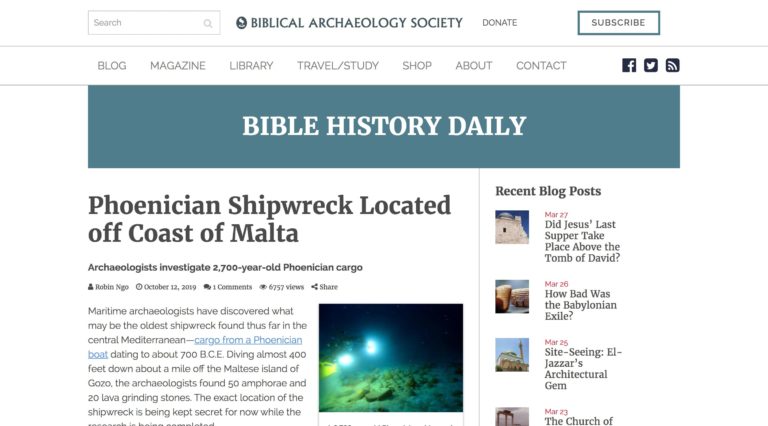
Phoenician Shipwreck Located off Coast of Malta
Maritime archaeologists have discovered what may be the oldest shipwreck found thus far in the central Mediterranean—cargo from a Phoenician boat dating to about 700 B.C.E.
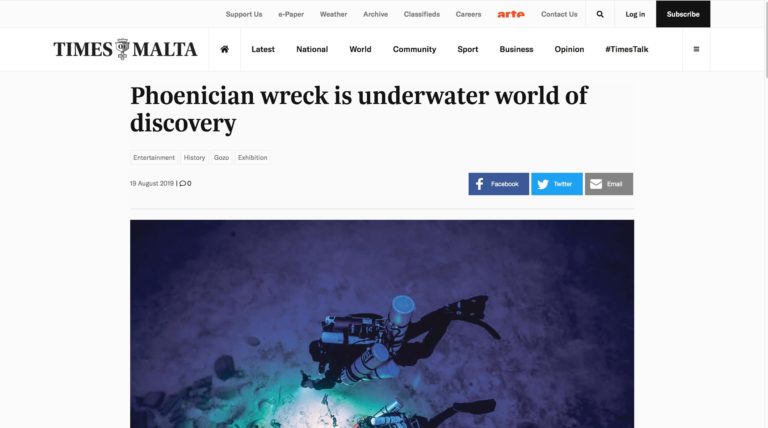
Phoenician wreck is underwater world of discovery
Exploring the Phoenician Shipwreck off Xlendi is the latest Heritage Malta exhibition highlighting discoveries from an innovative underwater project. The exhibition focuses on the discovery
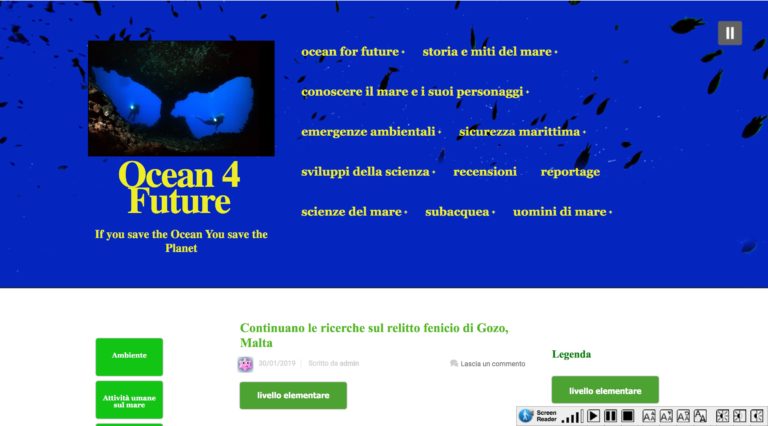
Continuano le ricerche sul relitto fenicio di Gozo, Malta
La scoperta nel 2007 del relitto di un naufragio avvenuto al largo della costa di Gozo ha offerto agli archeologi marini una rara opportunità di
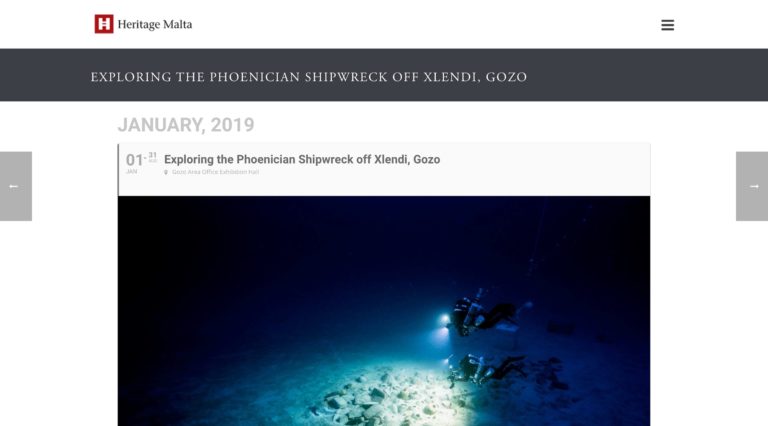
Exploring the Phoenician Shipwreck off Xlendi, Gozo
For over 10 years, the University of Malta has, in collaboration with a number of partners, used state of the art technologies to study and

This Ancient Underwater Discovery Is Being Exhibited For The First Time Ever In Gozo’s Cittadella
Have you ever wanted to explore a really (really) old underwater shipwreck? Now’s your chance! Heritage Malta’s new exhibition, Exploring the Phoenician Shipwreck off Xlendi, transports
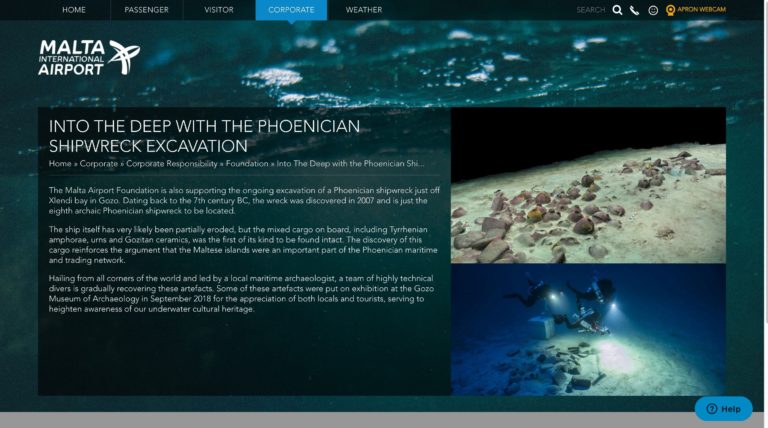
Into the deep with the Phoenician Shipwreck excavation
The Malta Airport Foundation is also supporting the ongoing excavation of a Phoenician shipwreck just off Xlendi bay in Gozo. Dating back to the 7th
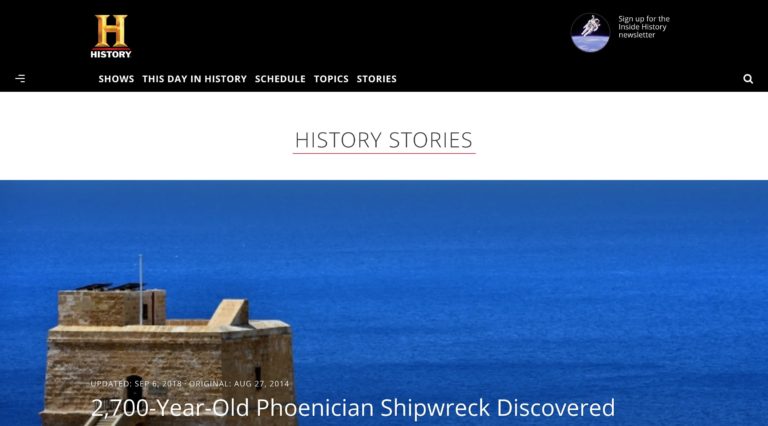
2,700-Year-Old Phoenician Shipwreck Discovered
An ancient Phoenician shipwreck found off the coast of Malta may be the oldest ever discovered in the Mediterranean Sea. The discovery was made several

Excavating a Phoenician shipwreck off the coast of Gozo, Malta
The Phoenicians occupied the coast of the Levant for over 1,000 years, but knowledge of their trade network and practices remains elusive. In 2007, an

